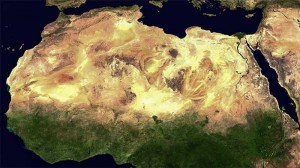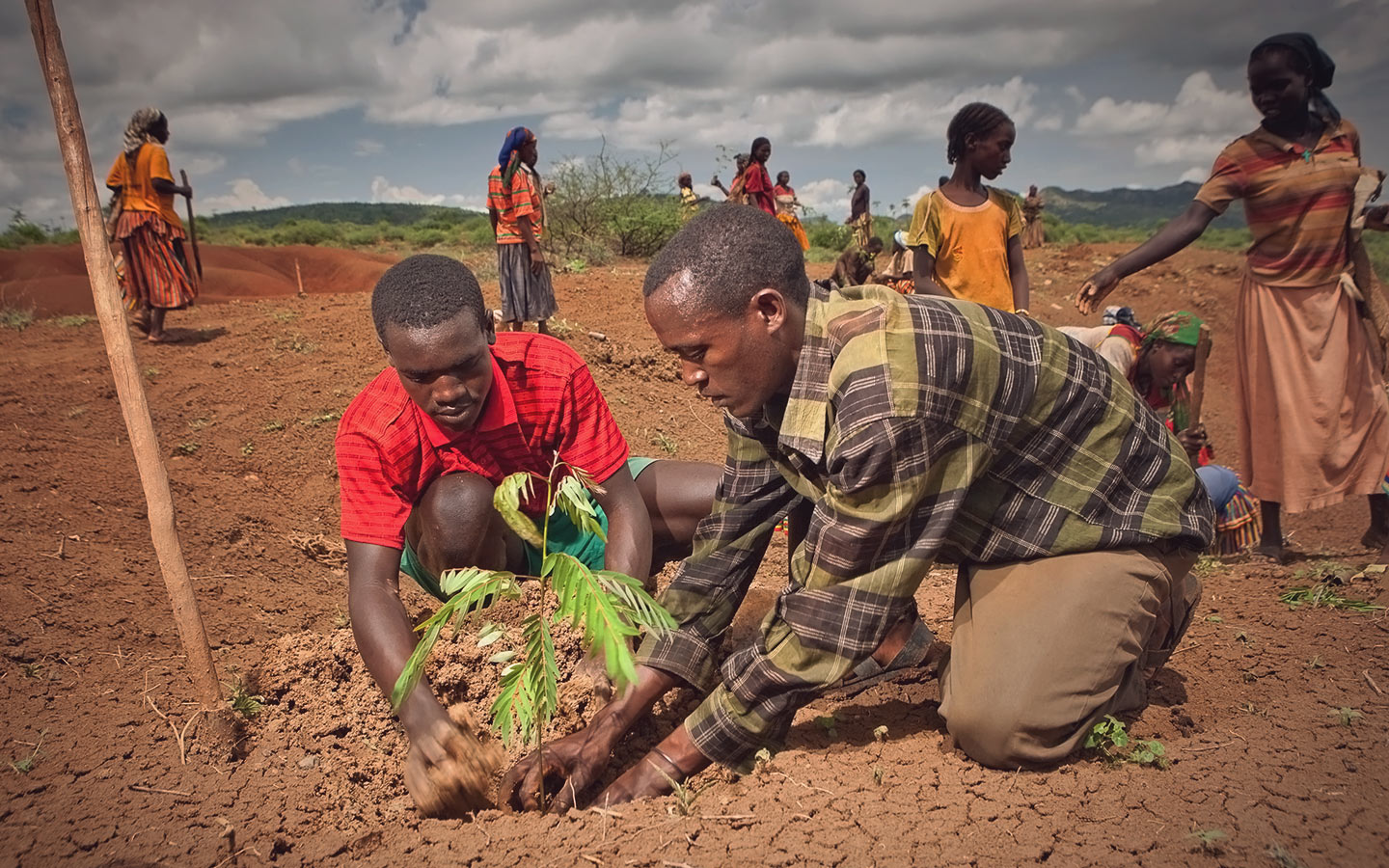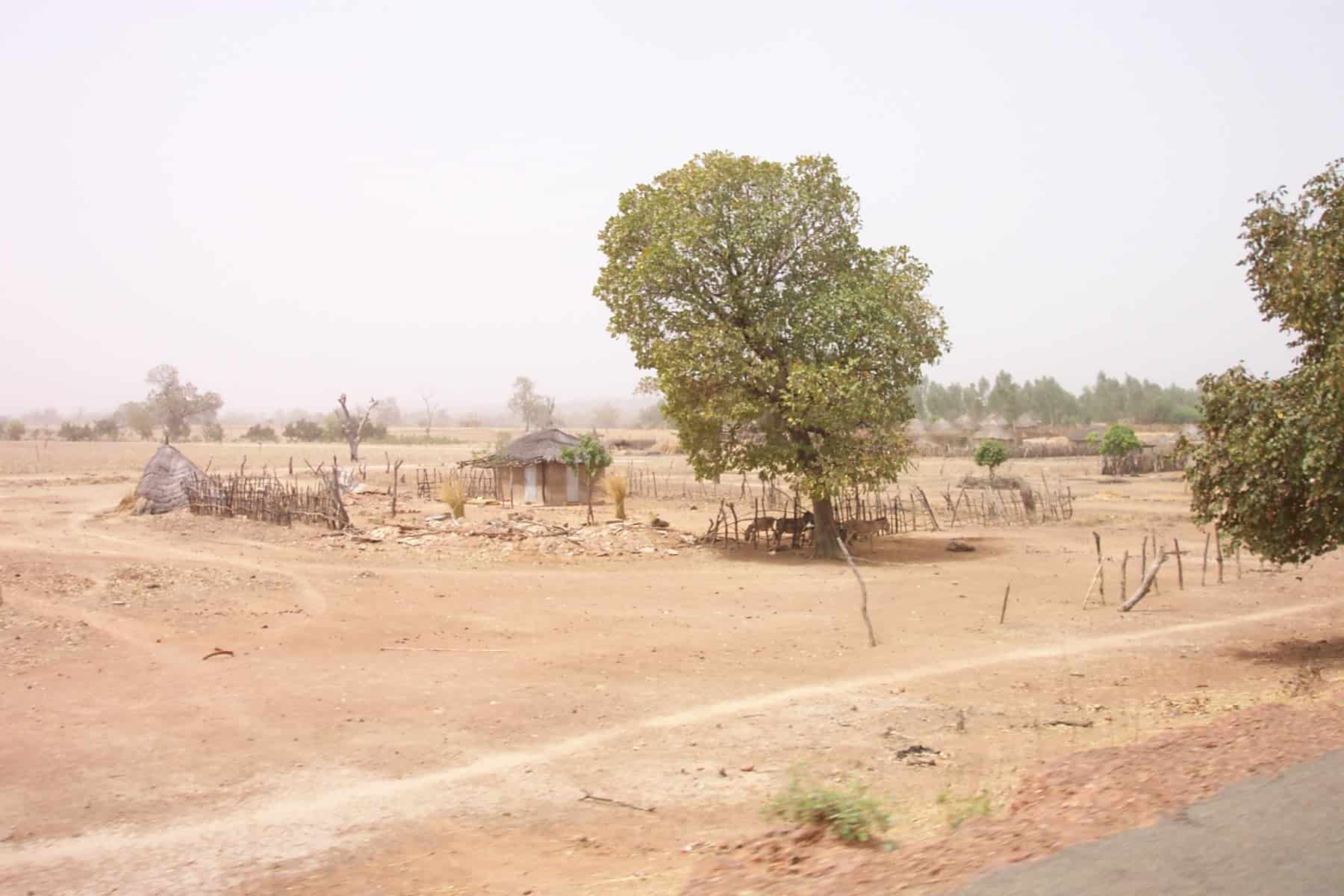World Soil Day is December 5th
More than 1.5 billion people in the world depend on degraded land, and about three-quarters (74%) of them live in poverty¹. For 250 million of these people, their plight has a name — desertification².
Desertification³, or land degradation occurring in arid, semi-arid, and dry sub-humid areas, results from both natural and human causes. It leaves farmers across sub-Saharan Africa searching for solutions. Desertification is not just scraping at the back door of families in places like West Africa. It is already in their homes, affecting their livelihoods in the most fundamental way.
Its impact appears in the meals they eat — and those they don’t. In this region, where agriculture forms the backbone of the economy and land is often a person’s most valuable asset, desertification means devastation. Sub-Saharan Africa, in particular, has a higher proportion of people living in poverty than any other region in the world. Additionally, 80% of these impoverished people rely on agriculture or farm labor for their livelihoods⁴.
As the land dries up, so does peace.
Impact of Desertification on Peace
In places like Nigeria, desertification is a threat to peace. Here, competition between nomadic cattle herders and farmers for land, increasingly swallowed by the Sahara Desert, has caused conflict more deadly than Boko Haram⁵. Similarly, in Ghana, Fulani herdsmen from neighboring countries, forced to migrate in search of pasture, have destroyed property across local villages⁶. As the land dries up, so does peace.
The Global Challenge of Desertification
Desertification is not just their problem. It is all of ours. The Food and Agriculture Organization of the United Nations estimates that by 2050, there will be one-third more mouths to feed, and global food supply must increase by about 70% to meet the demand⁷. In a world where agricultural land and farmers are being lost to urbanization, efficiency gains must be made on the land we already have. We cannot afford to lose any more, and some of the land already lost must be restored. Africa will be a key piece of the solution.
In the semi-arid places of West Africa, such as Senegal, where Trees for the Future works, the Food and Agriculture Organization estimates that the Sahara Desert is encroaching at a rate of five kilometers per year.

Understanding the Drivers of Desertification
So what can be done? In order to answer this question, we must understand the drivers of desertification, which are both environmental and man-made. Many forces that propel serious desertification worldwide relate to larger global environmental processes like climate change and natural disasters such as drought⁸.
We have also seen initiatives along the “Great Green Wall” route across Africa, where governments and organizations have planted massive bands of Eucalyptus trees. However, these trees have been shown to dry out groundwater tables. In our experience, and that of others, such as the World Agroforestry Centre, this is the wrong approach — using the wrong type of tree in the wrong place⁹. Combatting desertification from natural processes with trees known to degrade the soil will not work.
Human Causes of Desertification
On the human side, the causes have more to do with practices¹⁰. If you zoom in on Google Earth to view many of the cities sitting in arid lands along the south side of the Sahara Desert, you see a ring of desert expanding around those towns. This results from overgrazing, groundwater overdraft, certain tillage practices such as the removal of vegetative cover, and deforestation. Farming, land use change, and unsustainable land use practices all contribute to soil moisture loss. This increases land vulnerability to the gradual forces of desertification. These practices link directly to poverty, which means solutions must address both issues.
These practices are inextricably linked to poverty, and so the solutions must be, too. Trees for the Future knows this…
Solutions from Trees for the Future
Trees for the Future knows this. That is why it promotes solutions for farmers that are not only environmentally sustainable but also economically viable. Through its Forest Garden Program, Trees for the Future addresses all these drivers of desertification. It trains farmers and offers tools to establish Forest Gardens or agroforestry systems on one to two hectares of land. This support allows families to secure sustainable food sources, produce livestock feed, grow marketable products, enrich their diets, and restore land previously parched and withered.
Benefits of Forest Gardens
These trees not only help retain soil moisture but also deliver multiple co-benefits. They contribute to ecological and dietary diversity, carbon sequestration, and improved soil fertility — crucial for farmers facing costly fertilizer markets. Trees for the Future works on behalf of the poorest farmers to build a socially, economically, and environmentally resilient world. It protects farmers and their families from crises related to climate, personal finance, and health.

The Power of Agroforestry on the Farm
On the farm, it is incredible to see the transformation that planting the right trees can bring about. Trees fix nitrogen in the soil through their roots and promote the growth of fungi and microbes necessary for soil health. This biodiversity makes nutrients available for vegetation intake and vice versa. Additionally, the leaf litter that many agroforestry trees drop helps build topsoil. This organic material, mixed into the topsoil, encourages biodiversity and helps the soil trap moisture that sustains life in dry times. Every farmer in Trees for the Future’s program plants thousands of trees, including many nitrogen-fixing species that revitalize tired soils.
Affordable Solutions with Impact
Trees for the Future also achieves these monumental tasks affordably. Moreover, scholars agree that agroforestry systems are among the most cost-effective ways to improve soil health¹¹. Trees for the Future accomplishes this through the Forest Garden Approach. In the semi-arid places of West Africa, where the Food and Agriculture Organization reports that the Sahara Desert advances five kilometers annually — a dusty frontline that threatens livelihoods — solutions must move faster. Therefore, proactive measures should protect households from environmental and economic shocks. Additionally, investments must support the future of both land and people.
Trees for the Future has empowered thousands of farmers across Sub-Saharan Africa, improving the lives of over 26,000 people through the power of trees. Ultimately, the work of TREES advances soil health, food security, climate stability, nutrition, and peace.
It’s time to stop treating our soil like dirt
Click here to stop treating our soil like dirt, combat desertification, and support more farmers across Africa.
